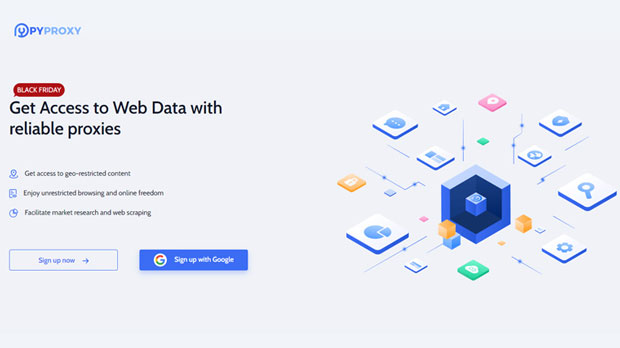How to check if Free Proxy List SOCKS5 is safe and trustworthy?
In today’s internet-driven world, privacy and security are paramount, and proxy servers, especially socks5 proxies, are widely used for masking IP addresses and securing online activities. However, when it comes to free SOCKS5 proxies, it’s crucial to understand the risks associated with them. A free proxy list may seem convenient, but it can also expose users to various security and privacy threats, including data leaks, identity theft, and malicious attacks. Therefore, knowing how to properly assess the safety and trustworthiness of a free socks5 proxy list is essential for anyone seeking secure online browsing. This article delves into the methods and tools you can use to evaluate whether a free socks5 proxy is safe to use and how to mitigate potential risks. Understanding SOCKS5 ProxiesBefore diving into the methods for testing and evaluating free SOCKS5 proxies, it's essential to have a basic understanding of what SOCKS5 proxies are and how they work. SOCKS5, which stands for "Socket Secure version 5," is a type of proxy server that relays network traffic between the client and server. Unlike HTTP proxies, SOCKS5 supports a wider range of protocols, including TCP, UDP, and even ICMP, making it more versatile. SOCKS5 proxies are often preferred for their ability to handle all kinds of internet traffic, including video streaming, gaming, and P2P file sharing, without being limited by specific protocols.While SOCKS5 proxies provide a layer of anonymity by hiding the user's IP address, they do not inherently encrypt the traffic like VPNs do. This means that while SOCKS5 can obscure your location, it cannot guarantee complete security. Free SOCKS5 proxies, in particular, are a double-edged sword – they are often unreliable and could expose your data to malicious actors. Therefore, testing and evaluating these proxies is essential to avoid compromising your security.Why is Evaluating Free SOCKS5 Proxies Important?There are several reasons why evaluating free SOCKS5 proxies is crucial:1. Security Concerns: Free proxies can be compromised by hackers, or the service provider could be logging user data. These proxies might redirect your traffic through unsafe servers, exposing sensitive information such as passwords, personal details, or even bank account numbers.2. Reliability: Free SOCKS5 proxies are often unstable and unreliable. They can drop connections, leading to interruptions in service. A frequent disconnection can make it challenging to carry out critical tasks, especially for activities like streaming, gaming, or secure browsing.3. Malware Risks: Some free proxy servers could be set up to inject malware into your device. Using a compromised proxy may expose you to Trojans, viruses, or spyware that can steal your data.4. Privacy Threats: Without proper encryption or security protocols, free SOCKS5 proxies may expose your browsing activities to third parties, such as ISPs, governments, or malicious entities monitoring internet traffic.Methods for Testing Free socks5 proxy serversNow that we understand the risks, here are some methods to assess the security and trustworthiness of a free SOCKS5 proxy:1. Check Proxy Server Logs and Privacy PoliciesMany free proxy servers claim to be "anonymous," but in reality, they may log your activity. Before using any free SOCKS5 proxy, check the service’s privacy policy and ensure that they do not retain logs of your browsing activity. The absence of a clear privacy policy or the presence of data-logging policies is a strong indicator that the proxy may not be trustworthy. Ideally, the proxy service should explicitly state that they do not log any data or store any personally identifiable information (PII).2. Test for DNS LeaksOne of the most common privacy vulnerabilities when using proxies is DNS leakage. When a DNS leak occurs, your DNS requests are sent directly to your ISP’s servers, revealing the websites you visit, even when you're using a proxy. To check for DNS leaks, use tools available online to monitor DNS requests while using the SOCKS5 proxy. If you find that your DNS requests are not being routed through the proxy server but instead through your local ISP, this is a red flag, and the proxy should be avoided.3. Evaluate Speed and StabilityA free proxy is often associated with slower speeds and unstable connections. Poor performance can not only disrupt your online activities but could also indicate that the server is overcrowded, unreliable, or potentially compromised. Test the proxy’s speed and consistency using speed test tools. If the proxy's response time is high or if connections frequently drop, you may want to reconsider using it for any critical activities.4. Monitor for MalwareOne of the dangers of using free proxies is that they may inject malware into your device. Always run a full security scan using trusted antivirus software when connecting to a new free SOCKS5 proxy. A reputable security tool can detect malware and alert you if the proxy server tries to inject harmful software into your system. Be cautious of proxies that require you to download additional software or plugins, as these could be vectors for malware.5. Conduct IP and WebRTC Leak TestsWhen using any proxy, it is important to ensure that no identifiable information is leaking. An IP leak could reveal your real IP address, while a WebRTC leak could expose your IP address even when you're connected to a proxy. Several online tools can help you test for these leaks. If your real IP address is visible during testing, it indicates that the proxy service is ineffective in providing true anonymity.6. Check for Proxy Authentication MethodsSOCKS5 proxies can support authentication methods, which add an extra layer of security. Free proxies that require authentication, such as username and password, are generally safer than those that do not. The authentication process prevents unauthorized access and can provide a level of control over who uses the proxy. If the free SOCKS5 proxy does not require any authentication, it may be a potential security risk, as anyone could use it, and its resources might be exploited.7. Use Advanced Proxy Scanning ToolsTo better assess the trustworthiness of free SOCKS5 proxies, you can use advanced proxy scanning tools that check for various factors, including anonymity levels, geo-location, and possible risks associated with the proxy. These tools can also flag proxies that have been flagged for malicious activities, ensuring that you stay away from potentially harmful servers.Conclusion: Protecting Your Security OnlineWhile free SOCKS5 proxies may seem appealing due to their cost-effectiveness, they come with significant risks. Understanding how to assess their security and trustworthiness is crucial to protect your personal information and maintain privacy online. Always test proxies for leaks, malware, and performance issues, and verify that the proxy service is transparent about its privacy policies. By following the methods outlined above, you can minimize the risks associated with free SOCKS5 proxies and ensure a safer browsing experience.
2025-01-07

























































